Do you have a question about the Yamaha HTR-5940 AV and is the answer not in the manual?
Explains the meaning of warning symbols used in the manual for user safety.
Specifies the power output capabilities of the amplifier section.
Lists the proprietary Yamaha technologies for creating sound fields.
Highlights the capabilities of the AM/FM tuner, including preset tuning.
Mentions the XM Satellite Radio tuning capability and Neural Surround decoder.
Lists additional functionalities such as D/A converter, sleep timer, and enhancers.
Lists all the items included in the product package.
Provides step-by-step instructions for inserting batteries into the remote control.
Describes the buttons and controls located on the front panel of the unit.
Explains the various indicators and information shown on the front panel display.
Details the functions of each button on the remote control.
Details the connection terminals and jacks located on the rear panel.
Guides the optimal placement of speakers for the best sound quality.
Provides instructions on how to properly connect speaker wires to terminals.
Explains cable preparation and connection methods, including banana plugs.
Describes different types of audio and video jacks and their corresponding plugs.
Illustrates the signal paths for audio outputs and video monitoring.
Details the procedure for connecting the unit to a television.
Explains how to connect various source components like DVD players and VCRs.
Details the process of connecting the supplied FM and AM antennas.
Explains how to set the speaker impedance to match the connected speakers.
Describes how to power the unit on and off, and enter standby mode.
Describes the quick system setup feature for minimal effort.
Describes manual adjustment of speaker and system parameters.
Menu for adjusting speaker settings and sound output quality.
Menu for reassigning input jacks, modes, and renaming sources.
Menu for adjusting optional system parameters like display and memory.
Balances the output level of each speaker for optimal sound.
Enables surround sound effects for headphone listening.
Explains how to mute the audio output and resume it.
Describes modes for improved listening at lower volumes.
Explains how to select digital or analog input signal modes.
Sets the unit to automatically switch to standby after a set time.
Improves sound quality of compressed audio files.
Downmixes multi-channel audio for stereo playback.
Explains the DIRECT STEREO mode for pure sound output.
Shows how to view input signal format, frequency, and channel details.
Explains how to enjoy 6.1-channel playback with surround back speakers.
Explains how to play 2-channel sources in multi-channel speaker setups.
Explains how to enjoy surround sound effects without rear speakers.
Explains the process for automatically tuning radio stations.
Explains the process for manually tuning radio stations.
Explains how to automatically store FM stations.
Explains how to manually store radio stations.
Describes how to recall stored radio stations using preset numbers.
Explains how to connect the XM satellite radio antenna accessory.
Describes the remote and front panel controls for XM radio.
Explains the process of signing up and activating the XM radio service.
Covers general usage and navigation of the XM radio feature.
Explains the different search modes for finding XM channels.
Explains how to store and manage XM radio channels as presets.
Explains how to choose and activate different sound field effects.
Details the purpose and characteristics of various sound field programs.
Explains how to customize parameters for each sound field program.
Details specific sound field parameters like DSP LEVEL and Delay.
Describes the quick system setup feature for minimal effort.
Describes manual adjustment of speaker and system parameters.
Menu for adjusting speaker settings and sound output quality.
Menu for reassigning input jacks, modes, and renaming sources.
Menu for adjusting optional system parameters like display and memory.
Sets speaker impedance to match the connected speakers for optimal performance.
Resets all unit parameters, including SET MENU, to factory defaults.
Explains how to set remote control codes for other components.
Explains how to use the remote control to operate the main unit.
Explains how to control other audio/video devices with the remote.
Details setting library codes for multi-component remote control.
Addresses common operational problems and their remedies.
Troubleshoots sound problems related to speaker connections and settings.
Troubleshoots problems related to the remote control's functionality.
Defines audio technologies like Dolby Digital, DTS, and sound field concepts.
Defines video signal types such as Component, Composite, and S-video.
Lists technical specifications for the audio output and input sections.
Lists technical specifications for the video output section.
Lists technical specifications for the FM tuner section.
Lists technical specifications for the AM tuner section.
Lists general specifications like power supply, dimensions, and weight.
Explains the meaning of warning symbols used in the manual for user safety.
Specifies the power output capabilities of the amplifier section.
Lists the proprietary Yamaha technologies for creating sound fields.
Highlights the capabilities of the AM/FM tuner, including preset tuning.
Mentions the XM Satellite Radio tuning capability and Neural Surround decoder.
Lists additional functionalities such as D/A converter, sleep timer, and enhancers.
Lists all the items included in the product package.
Provides step-by-step instructions for inserting batteries into the remote control.
Describes the buttons and controls located on the front panel of the unit.
Explains the various indicators and information shown on the front panel display.
Details the functions of each button on the remote control.
Details the connection terminals and jacks located on the rear panel.
Guides the optimal placement of speakers for the best sound quality.
Provides instructions on how to properly connect speaker wires to terminals.
Explains cable preparation and connection methods, including banana plugs.
Describes different types of audio and video jacks and their corresponding plugs.
Illustrates the signal paths for audio outputs and video monitoring.
Details the procedure for connecting the unit to a television.
Explains how to connect various source components like DVD players and VCRs.
Details the process of connecting the supplied FM and AM antennas.
Explains how to set the speaker impedance to match the connected speakers.
Describes how to power the unit on and off, and enter standby mode.
Describes the quick system setup feature for minimal effort.
Describes manual adjustment of speaker and system parameters.
Menu for adjusting speaker settings and sound output quality.
Menu for reassigning input jacks, modes, and renaming sources.
Menu for adjusting optional system parameters like display and memory.
Balances the output level of each speaker for optimal sound.
Enables surround sound effects for headphone listening.
Explains how to mute the audio output and resume it.
Describes modes for improved listening at lower volumes.
Explains how to select digital or analog input signal modes.
Sets the unit to automatically switch to standby after a set time.
Improves sound quality of compressed audio files.
Downmixes multi-channel audio for stereo playback.
Explains the DIRECT STEREO mode for pure sound output.
Shows how to view input signal format, frequency, and channel details.
Explains how to enjoy 6.1-channel playback with surround back speakers.
Explains how to play 2-channel sources in multi-channel speaker setups.
Explains how to enjoy surround sound effects without rear speakers.
Explains the process for automatically tuning radio stations.
Explains the process for manually tuning radio stations.
Explains how to automatically store FM stations.
Explains how to manually store radio stations.
Describes how to recall stored radio stations using preset numbers.
Explains how to connect the XM satellite radio antenna accessory.
Describes the remote and front panel controls for XM radio.
Explains the process of signing up and activating the XM radio service.
Covers general usage and navigation of the XM radio feature.
Explains the different search modes for finding XM channels.
Explains how to store and manage XM radio channels as presets.
Explains how to choose and activate different sound field effects.
Details the purpose and characteristics of various sound field programs.
Explains how to customize parameters for each sound field program.
Details specific sound field parameters like DSP LEVEL and Delay.
Describes the quick system setup feature for minimal effort.
Describes manual adjustment of speaker and system parameters.
Menu for adjusting speaker settings and sound output quality.
Menu for reassigning input jacks, modes, and renaming sources.
Menu for adjusting optional system parameters like display and memory.
Sets speaker impedance to match the connected speakers for optimal performance.
Resets all unit parameters, including SET MENU, to factory defaults.
Explains how to set remote control codes for other components.
Explains how to use the remote control to operate the main unit.
Explains how to control other audio/video devices with the remote.
Details setting library codes for multi-component remote control.
Addresses common operational problems and their remedies.
Troubleshoots sound problems related to speaker connections and settings.
Troubleshoots problems related to the remote control's functionality.
Defines audio technologies like Dolby Digital, DTS, and sound field concepts.
Defines video signal types such as Component, Composite, and S-video.
Lists technical specifications for the audio output and input sections.
Lists technical specifications for the video output section.
Lists technical specifications for the FM tuner section.
Lists technical specifications for the AM tuner section.
Lists general specifications like power supply, dimensions, and weight.
| Channels | 5.1 |
|---|---|
| Total Harmonic Distortion | 0.06% |
| Frequency Response | 10 Hz - 100 kHz |
| Signal-To-Noise Ratio | 100 dB |
| Input Sensitivity | 200 mV |
| Built-in Decoders | Dolby Digital, DTS |
| Tuner Presets | 40 |
| Surround Sound | Yes |
| Amplifier Output | 100 W |
| Power Output | 100 W |
| Input Impedance | 47 kΩ |
| Audio D/A Converter | 192 kHz / 24-bit |
| Sound Effects | Yes |
| Width | 435 mm |
| Depth | 360 mm |
| Height | 151 mm |
| Weight (lbs) | 35.3 |
| Video Inputs/Outputs | Composite |
| Digital Audio Inputs | 1 x Optical, 1 x Coaxial |
| Dimensions | 435 x 360 x 151 mm |
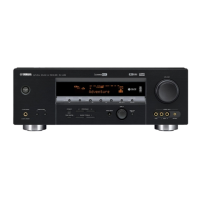
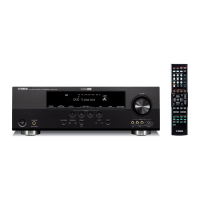

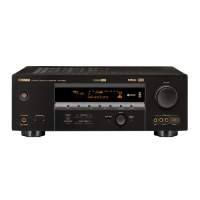
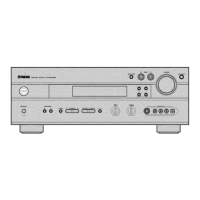
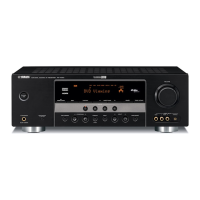
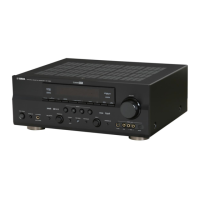
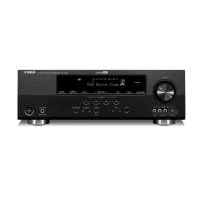
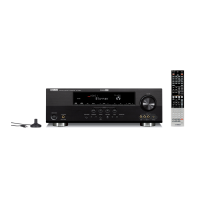

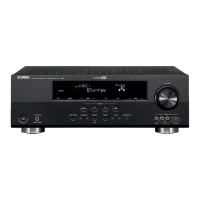

